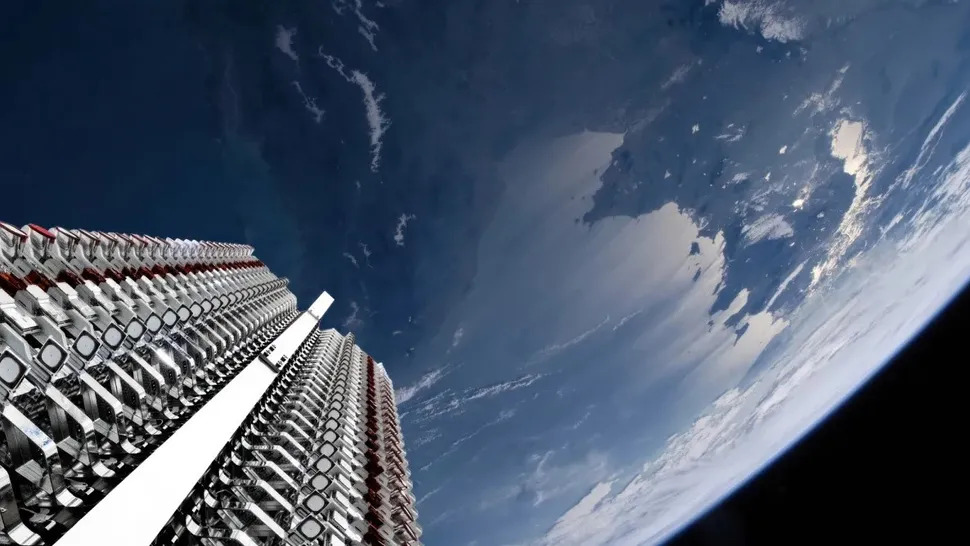SpaceX’s Starlink satellites have executed nearly 50,000 collision-avoidance maneuvers in the past six months, marking a dramatic increase from the previous period. This surge in evasive actions underscores the rising challenges of managing orbital traffic in an era of expanding satellite constellations.
SpaceX’s Collision-Avoidance Efforts
According to SpaceX’s latest Semiannual Constellation Status Report filed with the U.S. Federal Communications Commission (FCC) on July 1, 2024, the number of collision-avoidance maneuvers has doubled from the previous six-month period. Between December 1, 2023, and May 31, 2024, each Starlink satellite performed an average of 14 thruster burns to avoid potential collisions with other space objects, including fellow Starlink satellites, spacecraft from other operators, and space debris. The Starlink constellation expanded significantly during this time, growing from approximately 5,100 to 6,200 operational satellites.
SpaceX has also lowered its collision-avoidance threshold, making its satellites maneuver when the risk of collision is as low as one in a million—100 times more stringent than the industry standard. This proactive approach aims to enhance space safety amid increasing congestion in orbit.

Impact of Increased Orbital Traffic
SpaceX’s Starlink constellation, launched in May 2019, quickly became the largest satellite network, raising concerns among space sustainability experts. The frequency of collision-avoidance maneuvers has surged as the constellation has grown. The number of maneuvers performed doubled every six months for the first four years, reaching 25,299 in the half-year leading up to May 31, 2023. Despite the increase in satellites, the number of maneuvers remained stable between May and December 2023.
Hugh Lewis, a professor of astronautics at the University of Southampton and a leading expert on space sustainability, suggests that the recent increase in maneuvers is largely due to SpaceX’s lower maneuvering threshold. “Starlink satellites would have made approximately 25,000 maneuvers during this period if the threshold had remained unchanged,” Lewis said. “This is consistent with previous semi-annual reports, despite the growing number of satellites.”
Solar Activity and Space Debris
Lewis speculates that the recent stabilization in the number of collision-avoidance maneuvers by Starlink satellites could be linked to increased solar activity, which impacts the density and distribution of space debris. Solar storms, such as the one in May 2024, can significantly alter the Earth’s upper atmosphere by increasing the density of its tenuous gases. This heightened atmospheric density leads to greater drag on satellites, causing them to lower their altitudes and accelerate the orbital decay of debris. As a result, space debris may reenter Earth’s atmosphere more quickly, potentially reducing the overall amount of debris in orbit.
This phenomenon could contribute to a decrease in collision risk and, consequently, the frequency of maneuvers required to avoid potential collisions. The interplay between solar activity and space debris dynamics may thus be a key factor in the observed trends in maneuver frequency. By affecting both the density of space debris and the drag on existing debris, solar activity might be influencing the current patterns in orbital safety and maneuvering needs.
Autonomous Maneuvers and Future Predictions
Starlink satellites autonomously perform collision-avoidance maneuvers using onboard AI. However, these maneuvers can disrupt satellite path predictions, leading to inaccuracies in collision forecasts. A study by the Commercial Space Operations Center (COMSPOC) found that post-maneuver satellite positions can differ from forecasts by up to 25 miles (40 kilometers), complicating collision predictions.
Additionally, frequent maneuvers consume satellite propellants, potentially shortening their operational lifespans. SpaceX adheres to a zero-debris policy and deorbits satellites at the end of their life cycles. During the reported period, only one satellite failed to deorbit as planned.
Looking Ahead
SpaceX continues to expand the Starlink constellation, with plans for up to 42,000 satellites. As the constellation grows, the number of collision-avoidance maneuvers is expected to increase further. According to Lewis, the number of maneuvers could reach 80,000 per half-year by 2027, reflecting ongoing challenges in managing space traffic and maintaining orbital safety.








